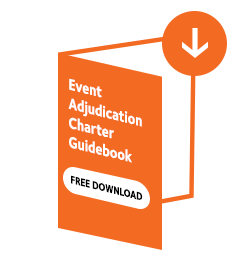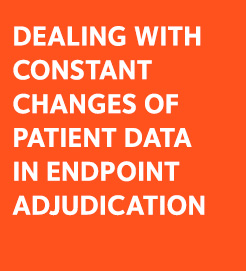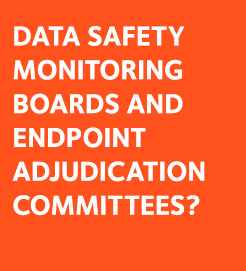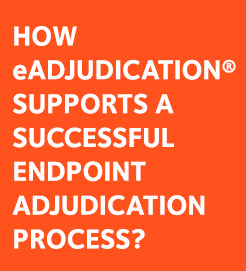Adverse events of special interest have emerged over the years as one of the most common fields of study of late-stage clinical trials. This is especially true during the development of second- or third-in class drugs where the safety profile of a particular class of drugs has already been explored during the development of the first-in-class drug and researchers know what to look for in order to establish a benefit-risk ratio. The correct identification and classification of AESI is paramount to the success of these drugs that do not respond to an unmet medical need but rather hope to show a better efficacy and/or safety profile than the frontrunner drug. This increasingly leads clinical trial sponsors to adjudicate AESI by a committee of independent experts to ensure consistency and neutrality.
Adverse Events of Special Interest (AESI) have gained visibility over the past decades as the knowledge of drugs in general increases and side effects of different classes of drugs or different mechanisms of action become more predictable. As knowledge is building upon experience, certain effects can be anticipated even if they have not occurred during the early phases of development where limited patient cohorts are exposed to the drug.
The prolongation of cardiac QTc interval AESI example
A well-studied example of known drug adverse effects that is systematically monitored during the development of certain drug classes is the prolongation of cardiac QTc interval causing cardiac arrhythmia within a few days of starting certain drugs. The mechanism of drug-induced QTc prolongation is believed to be due to blockade of cardiac potassium channels. A long QT interval is most frequently seen with class I and class III antiarrhythmic drugs, antihistamines, antidepressants, antibiotics, antifungal drugs and antipsychotics. The combined administration of certain drugs can also increase the risk of developing cardiac arrhythmias associated with long QTc syndrome. For example, any substance that inhibits the metabolism of an implicated drug can enhance its effect on QTc prolongation.
As a result, not only should adverse events related to cardiac rhythm be monitored during the development of new drugs in these classes but also the co-administration of other marketed drugs that can either have a combined effect or modify the metabolism of the drug under study. Of course, these concomitant medications can be started at any time during the study for a variety of indications, so continuous monitoring is needed.
It is important to remember that AESI such as arrhythmias associated to QTc interval prolongation are well described and, in most cases, do not result in withdrawal of the drug from market or refusal of marketing authorization. They are part of the benefit-risk ratio of each drug and must simply be monitored during development and during the marketed lifecycle of these drugs.
AESI adjudication by a committee of experts in late-phase trials
In late-phase clinical trials where large numbers of patients are exposed to a new drug, monitoring of AESI is a common practice. Preferred terms screening and standardized MedDRA Queries are useful and sufficient in many cases.
In other cases, however, the best way to identify with certainty an AESI and, most importantly, to establish its causality relation to the drug under study is through Adjudication by a committee of experts. Many types of AEs have common and non-specific symptoms and are difficult to distinguish in regular medical practice. Additional information must be collected and reviewed, preferably by more than one expert, and comparison of opinions performed in order to gain sufficient confidence about the nature of the event. In addition, because an AESI may be due to a variety of factors including the disease itself, other concomitant conditions or other concomitant medication taken by the patient, the adjudication committee must carefully review these parameters and the timing of their occurrence before returning a reliable opinion.
AESI and benefit-risk ratio
Because AESI are usually expected to be encountered, their continuous monitoring and assessment is paramount to the determination of the safety profile of the drug. For example, a new drug of a particular class may be expected, based on the safety profile of other drugs in the same class, to cause a certain type of AE, which is therefore classified as AESI and monitored.
The question, then, is not whether the AE will occur at all but rather what are the frequency and conditions of emergence in order to calculate the benefit-risk ratio in comparison to that of other drugs in the same class. If favorable, the drug is likely to be approved with the appropriate warnings.
An electronic adjudication platform such as eAdjudication®, designed to optimize the quality and efficiency of adjudication operations and management, is a key tool for the continuous monitoring and assessment of AESIs.
As in all scientific investigations, clinical trials seek to confirm or reject a hypothesis (generally the hypothesis that a new drug is efficient and safe at the selected doses in fighting a given disease). In order to conduct such investigation, scientists select the most representative outcome (a measurable change in health, function or quality of life), agree on the target value (endpoint) and calculate the size of the sample allowing a reasonable estimation of the true effect (power of the trial). It is good scientific practice to only ask one question at a time; therefore, a single primary endpoint should be selected whenever possible. In summary, the primary endpoint of a clinical trial is the endpoint based on which subjects are selected (and randomized) and for which the trial is powered. Secondary endpoints are endpoints for which the trial may not be powered nor randomized.
Because the results of the primary endpoint are the key to the success or failure of the trial, in addition to the blinding of patients and investigators to the actual treatment (double-blind), complex primary endpoints are increasingly adjudicated by independent committees of experts who have no financial or other interest links to the drug or the sponsor company. This process known as clinical endpoint adjudication removes any residual bias and strengthens the quality and validity of the primary endpoint results. Secondary endpoints are less frequently adjudicated.








